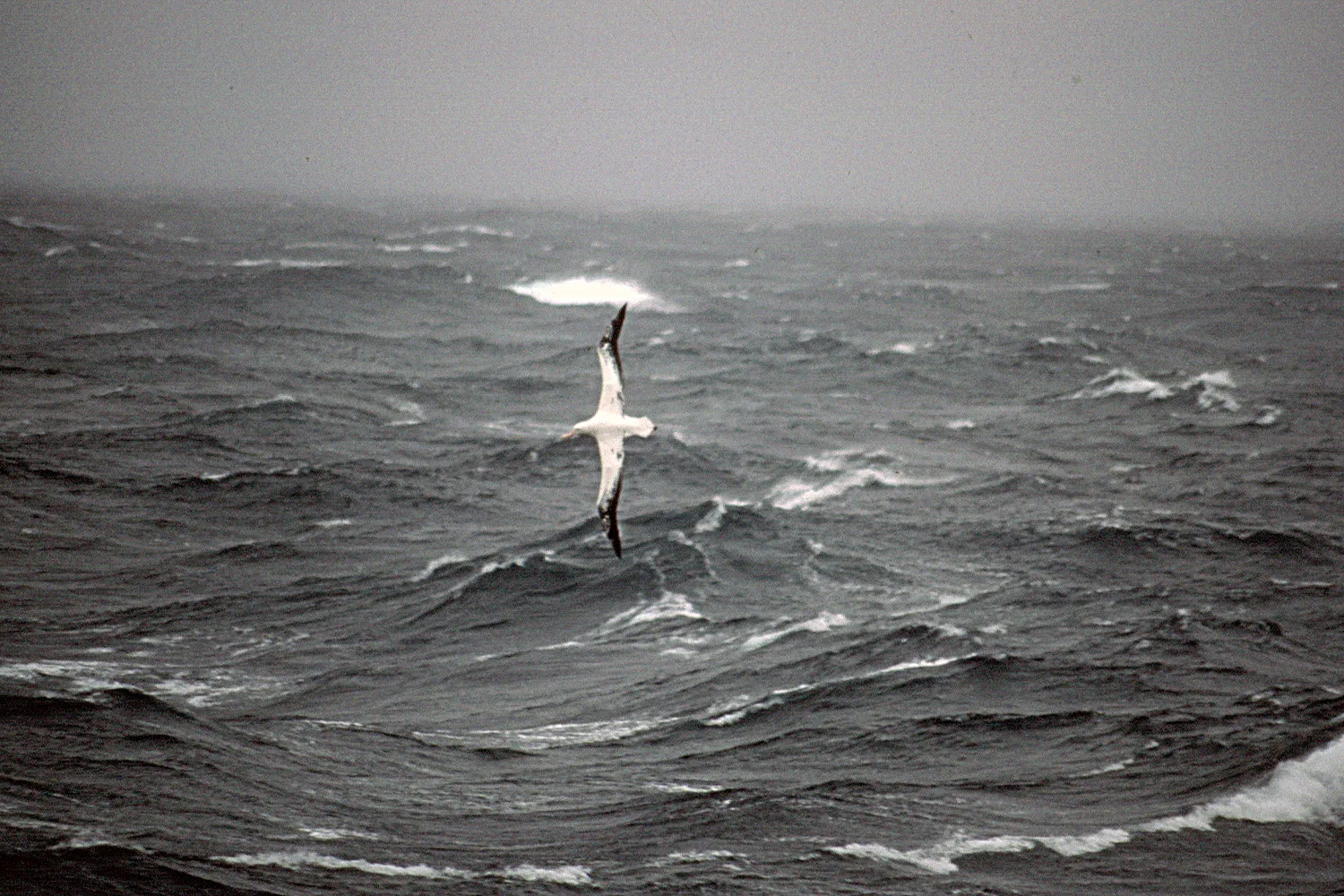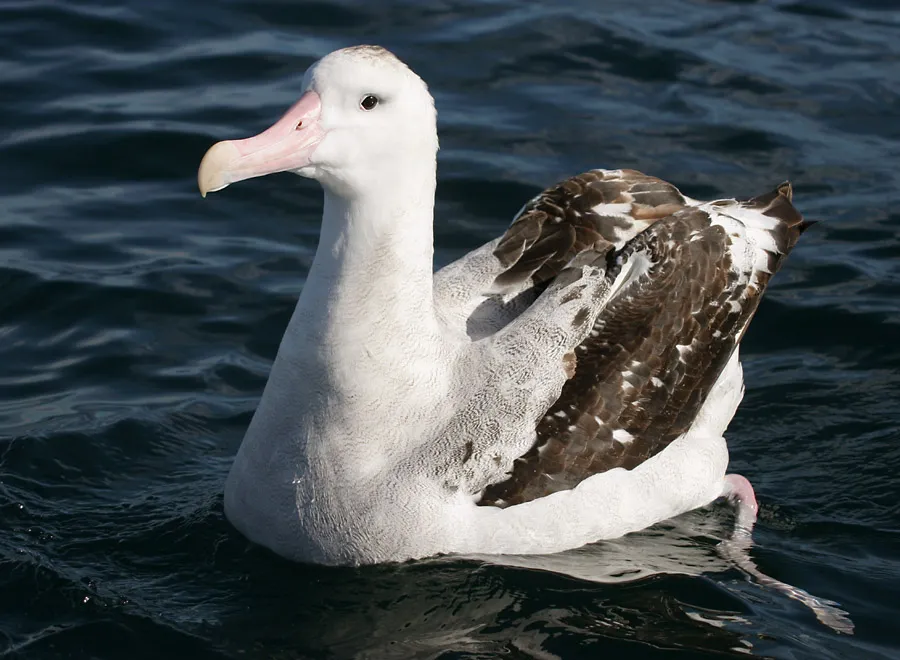Wandering Albatross - The Bird Which Made the Breeze to Blow - Diomedea exulans
More information on the wandering albatross
Back to gallery |
Previous
| Next
The wandering albatross is a truly remarkable bird. Residents of the species on the sub Antarctica island of South Georgia have been known to make regular fishing trips that take them as far as the seas off Uruguay and southern Brazil, round trips of thousands of kilometres over several days repeated frequently, and all to catch food for themselves and their young. Any visiting ship to the South Atlantic will almost certainly at some time be followed by one or more albatrosses, wheeling and turning around the ship, following at a distance hypnotically and silently.
The bird in this picture is a juvenile recognisable by the dark wing tips. As the bird ages, the dark patches recede further to the tips of the wings, so it becomes whiter. After leaving the nest they are thought not to return to land again for 7 to 10 years when they return to the island where they were born. Albatrosses mate for life and can live to be 80 - 85 years old probably making them the animal that travels further than any other in their life-time.
The birds rarely flap their wings that can measure up to 4 metres in span. They swoop low over the never ending swell of the southern ocean, dipping down when the sea falls and rising on the air that is pushed up again when the wave rises. In this manner they are able to fly continuously and cover vast distances with the minimum of effort. There is even a mechanism within the base of the wing to "lock" it in an extended position so the bird doesn't need to strain to keep its "arms" out.
The albatross is a large bird with a large chick. The chick is so large (12kg when it leaves the nest) that it takes just over 12 months to develop fully. This means that the albatross is in the same select group as king and emperor penguins in that it has a breeding cycle that stretches over 2 years.
In folklore the bird carries the soul of dead mariners. If a sailor kills the bird, bad luck would fall upon him for the rest of his natural life. This was not a universal belief as the feet of the albatross were once used as tobacco pouches by sailors.
The name albatross dates back to the 15th century when Portuguese sailors first ventured down the coast of Africa, they came across large black and white birds with stout bodies and called them "alcatraz" the Portuguese word meaning large seabird. English sailors later corrupted the word to albatross.
* "The bird that made the breeze to blow" taken from Samuel Taylor Coleridge "The Rime of the Ancient Mariner".
More information on the wandering albatross
Photos; Top - Paul Ward / Middle - dfaulder Creative Commons 2.0 Attribution Generic license.


